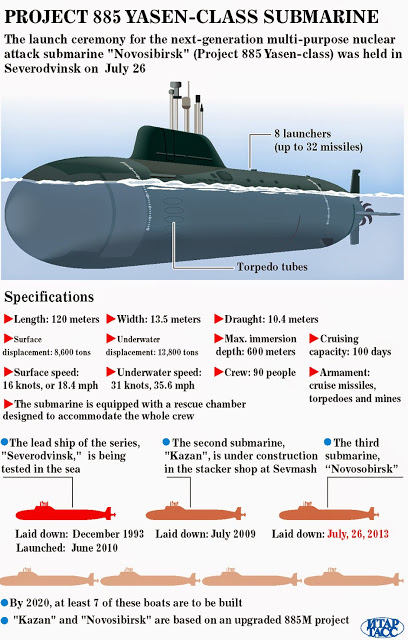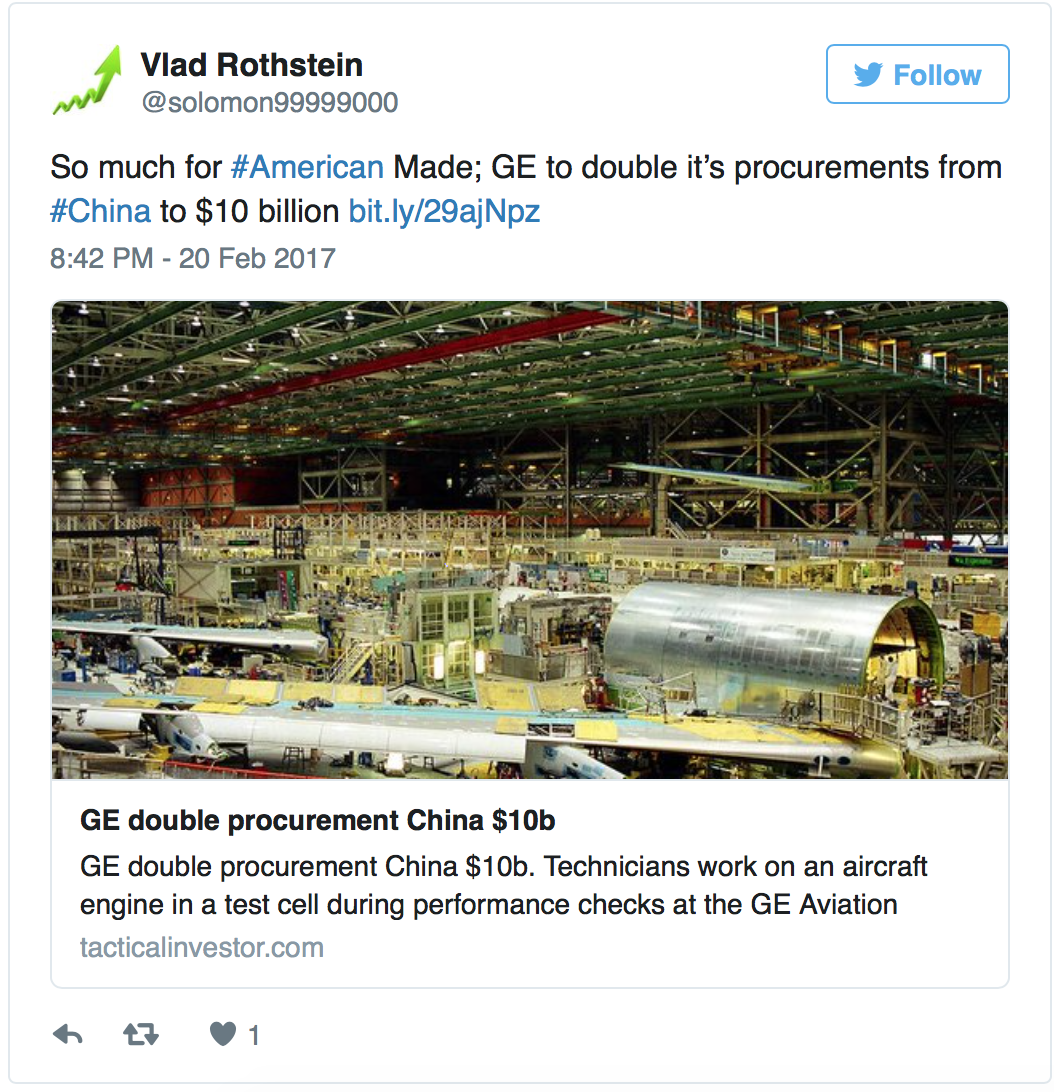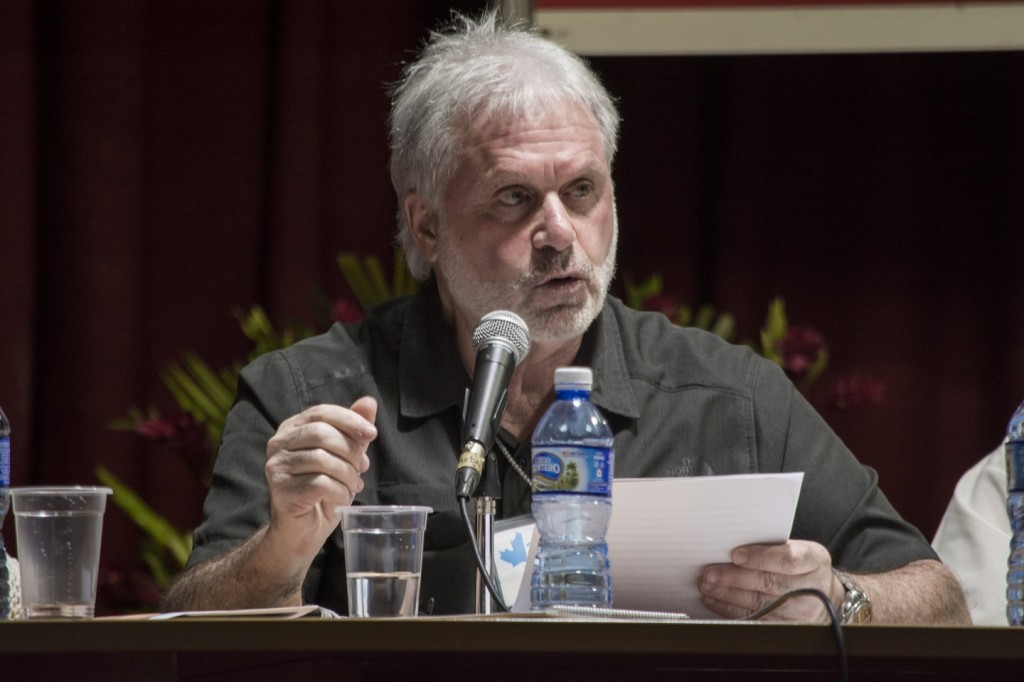Shortly after the mainstream media erupted in hysteria and neo-McCarthyistic attacks against former National Security Advisor Michael Flynn for having a routine conversation with the Russian Ambassador and for once having dinner with the President of Russia as part of an event, aging warmonger Senator John McCain recently announced that he had traveled illegally into Syria to meet with U.S. troops illegally stationed there as well as to meet with ISIS supporter and President of Turkey, Recep Tayip Erdogan.
McCain also met with the Saudi King Salman bin Abdulaziz and crown prince Sheikh Mohammad bin Zayed Al Nahyan of Abu Dhabi, United Arab Emirates. In addition, McCain also met with Kurdish fighters on the ground in Syria.
On February 22, McCain’s spokeswoman, Julie Tarallo, confirmed that McCain had made the trip, saying it was a “valuable opportunity to assess dynamic conditions on the ground in Syria and Iraq.”
Tarallo also praised Trump’s order to require the Department of Defense to provide a plan for combating the Islamic State in Syria within thirty days. She said, “Senator McCain looks forward to working with the administration and military leaders to optimize our approach for accomplishing ISIL’s lasting defeat.”
According to the Wall Street Journal, the trip was organized with the help of the U.S. military.
Curiously, (or, rather, typically), there were no catcalls of suspicion from the mainstream press nor were there suggestions that McCain had violated the Logan Act, even though he admitted he discussed the possibility of establishing “safe zones” in Syria and “strategies” for “fighting ISIS” in Syria with both Erdogan and international relations with the Saudi King and UAE crown prince.
McCain was also present at the Munich Security Conference where he criticized Trump’s rhetoric regarding NATO and his lack of adequate warmongering during the first two months of his presidency. According to the Associated Press,
During a speech Friday at the Munich Security Conference, McCain delivered a withering critique of Trump’s worldview as he lamented a shift in the U.S. and Europe away from the ‘universal values’ that forged the Western alliance 70 years ago.
McCain on Monday welcomed Trump’s selection of Army Lt. Gen. H.R. McMaster to be his national security adviser, calling the pick an “outstanding choice.”
Back in 2013, McCain traveled to Syria illegally where he met with terrorists backed by the United States and NATO, even taking pictures with terrorist leaders and some of the most bloodthirsty commanders of the invasion. McCain received virtually no criticism for his open violation of various American laws (including the ones he voted for). However, when U.S. Representative Tulsi Gabbard and former Rep. Dennis Kucinich met with Syrian President Bashar al-Assad after having traveled to Syria in order to tour the country and see the realities of the destruction the war, both were ravaged in the press.
McCain has had a long history of engaging in behavior that would have long ago torpedoed the career of many politicians and resulted in the incarceration of any average American. Remarkably, however, it doesn’t appear that age has slowed him down at all.
McCain Dismisses Missing Military Personnel
As Sydney Schanburg wrote in his excellent article, “The War Secrets Sen. John McCain Hides,” McCain was consistent, at least in his actions, in his refusal to allow any further attempts to discover and recover missing American POWs in Vietnam as well as even the possibility of allowing any further investigation as to the possibility that Americans were still being held captive. This is, of course, despite McCain’s incessant reliance on his military service as some type of qualification for whatever his political position of the day might be.
As Schanburg writes,
But there was one subject that was off-limits, a subject the Arizona senator almost never brings up and has never been open about — his long-time opposition to releasing documents and information about American prisoners of war in Vietnam and the missing in action who have still not been accounted for. Since McCain himself, a downed Navy pilot, was a prisoner in Hanoi for 5 1/2 years, his staunch resistance to laying open the POW/MIA records has baffled colleagues and others who have followed his career.
Critics say his anti-disclosure campaign, in close cooperation with the Pentagon and the intelligence community, has been successful. Literally thousands of documents that would otherwise have been declassified long ago have been legislated into secrecy.
For example, all the Pentagon debriefings of the prisoners who returned from Vietnam are now classified and closed to the public under a statute enacted in the 1990s with McCain’s backing. He says this is to protect the privacy of former POWs and gives it as his reason for not making public his own debriefing.
[…]
Many Vietnam veterans and former POWs have fumed at McCain for keeping these and other wartime files sealed up. His explanation, offered freely in Senate hearings and floor speeches, is that no one has been proven still alive and that releasing the files would revive painful memories and cause needless emotional stress to former prisoners, their families and the families of MIAs still unaccounted for. But what if some of these returned prisoners, as has always been the case at the conclusion of wars, reveal information to their debriefing officers about other prisoners believed still held in captivity? What justification is there for filtering such information through the Pentagon rather than allowing access to source materials? For instance, debriefings from returning Korean war POWs, available in full to the American public, have provided both citizens and government investigators with important information about other Americans who went missing in that conflict.
Would not most families of missing men, no matter how emotionally drained, want to know? And would they not also want to know what the government was doing to rescue their husbands and sons? Hundreds of MIA families have for years been questioning if concern for their feelings is the real reason for the secrecy.
Others, however, suspect that all of McCain’s insistence in keeping the information classified revolves around whether or not releasing the debriefings would open the door to McCain’s closet, suggesting that there skeletons lurking inside it that the Senator does not want falling out. Schanburg writes,
A smaller number of former POWs, MIA families and veterans have suggested there is something especially damning about McCain that the senator wants to keep hidden. Without release of the files, such accusations must be viewed as unsubstantiated speculation. The main reason, however, for seeking these files is to find out if there is any information in the debriefings, or in other MIA documents that McCain and the Pentagon have kept sealed, about how many prisoners were held back by North Vietnam after the Paris peace treaty was signed in January 1973. The defense and intelligence establishment has long resisted the declassification of critical records on this subject. McCain has been the main congressional force behind this effort.
The prisoner return in 1973 saw 591 Americans repatriated by North Vietnam. The problem was that the U.S. intelligence list of men believed to be alive at that time in captivity — in Vietnam, Laos and possibly across the border in southern China and in the Soviet Union — was much larger.
Possibly hundreds of men larger. The State Department stated publicly in 1973 that intelligence data showed the prisoner list to be starkly incomplete. For example, only nine of the 591 returnees came out of Laos, though experts in U.S. military intelligence listed 311 men as missing in that Hanoi-run country alone, and their field reports indicated that many of those men were probably still alive. Hanoi said it was returning all the prisoners it had.
President Nixon, on March 29, 1973, seconded that claim, telling the nation on television: “All of our American POWs are on their way home.” This discrepancy has never been acknowledged or explained by official Washington. Over the years in Washington, McCain, at times almost single-handedly, has pushed through Pentagon-desired legislation to make it impossible or much harder for the public to acquire POW/MIA information and much easier for the defense bureaucracy to keep it hidden.
Then there is also the case of the Truth Bill. A relatively simple bill which stated that
[The] head of each department or agency which holds or receives any records and information, including live-sighting reports, which have been correlated or possibly correlated to United States personnel listed as prisoner of war or missing in action from World War II, the Korean conflict and the Vietnam conflict shall make available to the public all such records and information held or received by that department or agency. In addition, the Department of Defense shall make available to the public with its records and information a complete listing of United States personnel classified as prisoner of war, missing in action, or killed in action (body not returned) from World War II, the Korean conflict, and the Vietnam conflict.
As one might suspect, a Pentagon implicated in the abandonment of these soldiers thus vehemently opposed the bill.
The bill was defeated in 1989. In 1991, it reappeared only to quickly disappear again. Although the interest from family members of the missing veterans as well as the American public had not necessarily waned, another bill was inserted in its place – The McCain Bill. As Schanburg describes,
This measure turned “The Truth Bill ” on its head. It created a bureaucratic maze from which only a fraction of the available documents could emerge. And it became law. So restrictive were its provisions that one clause actually said the Pentagon didn’t even have to inform the public when it received intelligence that Americans were alive in captivity.
First, it decreed that only three categories of information could be released, i.e., “information … that may pertain to the location, treatment, or condition of” unaccounted-for personnel from the Vietnam War. (This was later amended in 1995 and 1996 to include the Cold War and the Korean conflict.) If information is received about anything other than “location, treatment or condition,” under this statute, which was enacted in December 1991, it does not get disclosed.
Second, before such information can be released to the public, permission must be granted by the primary next of kin, or PNOK. In the case of Vietnam, letters were sent by the Department of Defense to the 2,266 PNOK. More than 600 declined consent (including 243 who failed to respond, considered under the law to be a “no”).
[…]
Finally, in addition to these hurdles and limitations, the McCain act does not specifically order the declassification of the information. Further, it provides the Defense Department with other justifications for withholding documents. One such clause says that if the information “may compromise the safety of any United States personnel … who remain not accounted for but who may still be alive in captivity, then the Secretary [of Defense] may withhold that record or other information from the disclosure otherwise required by this section.”
Boiled down, the preceding paragraph means that the Defense Department is not obligated to tell the public about prisoners believed alive in captivity and what efforts are being made to rescue them. It only has to notify the White House and the intelligence committees in the Senate and House. The committees are forbidden under law from releasing such information.
At the same time, the McCain act is now being used to deny access to other sorts of records. For instance, part of a recent APBnews.com Freedom of Information Act request for the records of a mutiny on merchant marine vessel in the 1970s was rejected by a Defense Department official who cited the McCain act. Similarly, requests for information about Americans missing in the Korean War and declared dead for the last 45 years have been denied by officials who reference the McCain statute.
In 1996, however, another bill appeared. Entitled the Missing Service Personnel Act, the bill attempted to force the Pentagon to do more and act faster to find and subsequently recover missing military service personnel. The bill contained measures that required very strict reporting requirements for these purposes.
Schanburg describes how McCain once again rode into town to destroy any potential that may have existed to discover existing missing personnel or any personnel who might become missing in the future. He writes,
McCain amended the heart out of the statute. For example, the 1995 version required a unit commander to report to his theater commander within two days that a person was missing and describe what rescue and recovery efforts were underway. The McCain amendments allowed 10 days to pass before a report had to be made.
In the 1995 act, the theater commander, after receiving the MIA report, would have 14 days to report to his Cabinet secretary in Washington. His report had to “certify” that all necessary actions were being taken and all appropriate assets were being used “to resolve the status of the missing person.” This section was stricken from the act, replaced with language that made the Cabinet secretary, not the theater commander, the recipient of the report from the field. All the certification requirements also were stricken.
[…]
In response, the backers of the original statute cited the Pentagon’s stained record on MIA’s and argued that military history had shown that speed of action is critical to the chances of recovering a missing man. Moving “the bureaucracy ” to Washington, they said, was merely a way to sweep the issue under a rug.
One final evisceration in the law was McCain’s removal of all its enforcement teeth. The original act provided for criminal penalties for anyone, such as military bureaucrats in Washington, who destroy or cover up or withhold from families any information about a missing man. McCain erased this part of the law. He said the penalties would have a chilling effect on the Pentagon’s ability to recruit personnel for its POW/MIA office.
Schanburg points out how McCain has personally acted as the first line of defense against any who may suggest that POWs were left to their fate in Vietnam. McCain acts, on this issue especially, behind a carefully crafted but false veneer of patriotism and military service that appears to make him infallible in the eyes of many low information voters.
Schanburg writes,
McCain does not deal lightly with those who disagree with him on any of these issues or who suggest that the evidence indeed shows that a significant number of prisoners were alive and cached away as future bargaining chips when he came home in the group of 591 released in 1973.
Over the years, he has regularly vilified any group or person who keeps trying to pry out more evidence about MIAs. He calls them “hoaxers” and “charlatans ” and “conspiracy theorists.” He decries the “bizarre rantings of the MIA hobbyists” and describes them as “individuals primarily who make their living off of keeping the issue alive.” Before he died last year of leukemia, retired Col. Ted Guy, a highly admired POW and one of the most dogged resisters in the camps, wrote an angry open letter to the senator in an MIA newsletter. In it, he said of McCain’s stream of insults: “John, does this include Senator Bob Smith and other concerned elected officials? Does this include the families of the missing where there is overwhelming evidence that their loved ones were ‘last known alive? ’ Does this include some of your fellow POWs?”
Clearly, McCain likes dissent the way he likes his veterans – silent. This silence, for McCain, can come by any means necessary.
Indeed, McCain has been the biggest denier of all when it comes to the possibility that American soldiers were left on the battlefield. Schanburg states,
McCain has said again and again that he has seen no “credible” evidence that more than a tiny handful of men might have been alive in captivity after the official prison return in 1973. He dismisses all of the subsequent radio intercepts, live sightings, satellite photos, CIA reports, defector information, recovered enemy documents and reports of ransom demands — thousands and thousands of pieces of information indicating live captives — as meaningless. He has even described these intelligence reports as the rough equivalent of UFO and alien sightings.
In Congress, colleagues and staffers who have seen him erupt — in the open and, more often, in closed meetings — profess themselves confounded by his behavior. Insisting upon anonymity so as not to invite one of his verbal assaults, they say they have no easy way to explain why a former POW would work so hard and so persistently to keep POW/MIA information from coming out. Typical is the comment of one congressional veteran who has watched McCain over many years: “This is a man not at peace with himself.”
Some McCain watchers searching for answers point to his recently published best-selling autobiography, Faith of My Fathers, half of which is devoted to his years as a prisoner. In the book, he says he felt badly throughout his captivity because he knew he was being treated more leniently than his fellow POWs owing to his propaganda value as the son of Adm. John S. McCain II, who was then the CINCPAC — commander in chief of all U.S. forces in the Pacific region, including Vietnam. (His captors considered him a prize catch and nicknamed him the “Crown Prince.”)
Also in the book, the Arizona Senator repeatedly expresses guilt and disgrace at having broken under torture and given the North Vietnamese a taped confession, broadcast over the camp loudspeakers, saying he was a war criminal who had, among other acts, bombed a school. “I felt faithless and couldn’t control my despair,” he writes. He writes, revealing that he made two half-hearted attempts at suicide. Most tellingly, he said he lived in “dread” that his father would find out. “I still wince,” he says, “when I recall wondering if my father had heard of my disgrace.”
[…]
But how would McCain’s forced confession alone explain his endless campaign against releasing MIA/POW information?
Some veterans and other McCain watchers have speculated that McCain’s mortification, given his family’s proud military tradition (his grandfather was also an admiral), was so severe that it continues to haunt him and make him fear any opening up of information that could revive previously unpublished details of the era, including his own nagging history.
McCain’s nagging problem – at least while surviving Vietnam veterans and/or their family members were more prevalent than they are today – was the fact that there were actual witnesses to the evidence pointing toward the existence of American POWs in Vietnam.
Schanburg writes about the case of Dolores Apodaca Alfond, Chairwoman of the National Alliance of Families. He states,
Her pilot brother, Capt. Victor J. Apodaca, out of the Air Force Academy, was shot down over Dong Hoi, North Vietnam, in the early evening of June 8, 1967. At least one person in the two-man plane survived. Beeper signals from a pilot’s distress radio were picked up by overhead helicopters, but the cloud cover was too heavy to go in.
Hanoi has recently turned over some bone fragments that are supposed to be Apodaca’s. The Pentagon first declared the fragments to be animal bones. But now it is telling the family — verbally — that they came from the pilot. But the Pentagon, for unexplained reasons, will not put this in writing, which means Apodaca is still unaccounted for. Also the Pentagon refuses to give Alfond a sample of the fragments so she can have testing done by an independent laboratory.
Alfond’s testimony, at a hearing of the POW/MIA committee Nov. 11, 1992, was revealing. She pleaded with the committee not to shut down in two months, as scheduled, because so much of its work was unfinished. Also, she was critical of the committee, and in particular Kerry and McCain, for having “discredited the overhead satellite symbol pictures, arguing there is no way to be sure that the [distress] symbols were made by U.S. POWs.” She also criticized them for similarly discounting data from special sensors, shaped like a large spike with an electronic pod and an antenna, that were airdropped to stick in the ground along the Ho Chi Minh trail.
[…]
Other than the panel’s second co-chairman, Sen. Bob Smith, R-N.H., not a single committee member attended this public hearing. But McCain, having been advised of Alfond’s testimony, suddenly rushed into the room to confront her. His face angry and his voice very loud, he accused her of making “allegations … that are patently and totally false and deceptive.” Making a fist, he shook his index finger at her and said she had insulted an emissary to Vietnam sent by President Bush. He said she had insulted other MIA families with her remarks. And then he said, through clenched teeth: “And I am sick and tired of you insulting mine and other people’s [patriotism] who happen to have different views than yours.”
By this time, tears were running down Alfond’s cheeks. She reached into her handbag for a handkerchief. She tried to speak: “The family members have been waiting for years — years! And now you’re shutting down.” He kept interrupting her. She tried to say, through tears, that she had issued no insults. He kept talking over her words. He said she was accusing him and others of “some conspiracy without proof, and some cover-up.” She said she was merely seeking “some answers. That is what I am asking.” He ripped into her for using the word “fiasco.” She replied: “The fiasco was the people that stepped out and said we have written the end, the final chapter to Vietnam.” “No one said that,” he shouted. “No one said what you are saying they said, Ms. Alfond.” And then, his face flaming pink, he stalked out of the room, to shouts of disfavor from members of the audience.
As with most of McCain’s remarks to Alfond, the facts in his closing blast at her were incorrect. Less than three weeks earlier, on Oct. 23, 1992, in a ceremony in the White House Rose Garden, President Bush — with John McCain standing beside him — said: “Today, finally, I am convinced that we can begin writing the last chapter in the Vietnam War.”
The committee did indeed, as Alfond said they planned to do, shut down two months after the hearing.
Schanburg is no “conspiracy theorist,” it should be noted. He is a Pulitzer Prize winner from 1975 whose coverage of the social and political situation in Cambodia won him the award. Indeed, it was Schanburg’s work that laid the basis for the movie The Killing Fields.
McCain’s Support For ISIS
Yet McCain’s treachery regarding missing US military service personnel is not the only crime of his career by any stretch of the imagination. On the Sean Hannity Show, when responding to some tepid criticism by Rand Paul regarding the methods taken to support Western-backed jihadist death squads in Syria, McCain stated,
Has Rand Paul ever been to Syria? Has he ever met with ISIS? Has he ever met with any of these people? No. No. We’re gonna have a fight because it’s patently false. This is the same Rand Paul that said we didn’t want to have anything to do with anything by the way. I don’t want to get in a fight with him at all. But it’s not true. I know these people. I’m in contact with them all the time and he is not.
Earlier in the interview, after stating that he could personally show Obama places on the map to bomb in Syria to kill ISIS, he also stated that, in regards to the death squads, “I know these people intimately. We talk to them all the time.”
McCain also referred back to the tired line of Syrian death squads actually being peaceful protesters “fighting for freedom.”
Indeed, of those who provide material support to terrorism, John McCain would obviously rank at the top of the list. After all, John McCain led the charge in support of ISIS even before the terrorist group actually was called ISIS. Even after the new name and the brutality of its terrorist acts were revealed, John McCain has continued to push the outlandish lie that ISIS is a better choice than the secular government of Bashar al-Assad. He has also pushed for the U.S. Congress to support acting as Al-Qaeda’s Air Force in Syria.
It is important to note that even as the U.S. House was debating whether or not to pass token legislation to passively allow the Obama administration to perpetrate yet another foreign war against a sovereign nation that poses no threat to the United States, rabid warmonger John McCain was grilling Secretary of State John Kerry in what amounted to nothing more than some mildly entertaining D.C. theatre.
McCain grilled Kerry on the reason why the United States is not engaging in airstrikes against Assad’s air defenses as well as a full-scale ground invasion. Attempting to somehow paint Assad as worse than ISIS, McCain stated,
I think at least we owe the Free Syrian Army, negate the air attacks that they will be subjected to when they finish their training and equipping, and go into the fight. So why is it that we won’t at least news release Bashar al Assad’s air activity which has slaughtered thousands and thousands and thousands, 192,000 dead, 3 million refugees, and we’re not going to do anything about Assad’s air capabilities? And finally, ISIL first, that’s what you’re telling these young men who really view Assad as the one who has slaughtered their family members. Not ISIL. As bad as ISIL is.
Yet while his ideology may not be a crime, actually meeting and coordinating with Al-Qaeda most certainly is. In this regard, McCain has overwhelmingly demonstrated his guilt, having been caught in a number of photographs with the leader of death squad battalions, cannibals, and even the leader of al-Qaeda/ISIS himself.
McCain’s photo-op in Syria is a very interesting case since members of the general public are still considered as guilty of “providing material support” to terrorists if they engage in the same activities.
Regardless, Salem Idriss, one of the men seen in the photograph with John McCain, is the commander of the FSA, the “opposition group” touted as a “moderate rebels.” In reality, of course, the FSA is nothing of the sort. As Daniel Wagner wrote for the Huffington Post in December, 2012,
In the outskirts of Aleppo, the FSA has implemented a Sharia law enforcement police force that is a replica of the Wahhabi police in Saudi Arabia — forcing ordinary citizens to abide by the Sharia code. This is being done in a secular country which has never known Sharia Law. This type of action is currently also being implemented in northern Mali, where the West has officially declared its opposition to the al-Qaeda government that took control earlier this year. If what is happening near Aleppo is representative of what may happen if the FSA assumes control of Syria, the country may become an Islamic state. Is that really what the U.S. and other Western countries are intending to tacitly support?
[…]
The FSA has also been targeting the infrastructure of the country. One of the main power plants in Damascus was knocked out for three days last week, impacting 40 percent of the city’s residents. Do ‘freedom fighters’ typically attack critical infrastructure that impacts ordinary citizens on a mass scale? The FSA long ago stopped targeting solely government and military targets.
The FSA is no stranger to atrocities. The FSA is the “moderate opposition” that was filmed forcing a young child to behead a Syrian soldier. It is also the “moderate opposition” that maintained “burial brigades,” a system of mass murder and mass executions against soldiers and those who support the Syrian government. The burial brigades were only one small part of a much wider campaign of terror and executions implemented by the Free Syrian Army.
Of course, the Free Syrian Army is merely the umbrella group of death squads carefully crafted to present a “moderate” face on what is, in reality, nothing more than savage terrorists. Thus, the FSA encompasses(d) a number of smaller “brigades” of al-Qaeda terrorists in order to cover up the true nature of its own ranks.
One such brigade was the Farouq brigade, to which Abu Sakkar was a member. Sakkar, also seen in photographs with John McCain, was the famous rebel videotaped cutting the heart out of a Syrian soldier and biting into it.
Abu Bakr al-Baghdadi, another one of McCain’s pic-mates, is now the leader of IS (ISIS/ISIL) and was the leader of al-Qaeda forces at the time that the photograph was taken. As Voltaire Netdescribes Baghdadi,
Abu Bakr al-Baghdadi is an Iraqi who joined Al-Qaeda to fight against President Saddam Hussein. During the U.S. invasion, he distinguished himself by engaging in several actions against Shiites and Christians (including the taking of the Baghdad Cathedral) and by ushering in an Islamist reign of terror (he presided over an Islamic court which sentenced many Iraqis to be slaughtered in public). After the departure of Paul Bremer III, al-Baghdadi was arrested and incarcerated at Camp Bucca from 2005 to 2009. This period saw the dissolution of Al-Qaeda in Iraq, whose fighters merged into a group of tribal resistance, the Islamic Emirate of Iraq.
On 16 May 2010, Abu Bakr al-Baghdadi was named emir of the IEI, which was in the process of disintegration. After the departure of U.S. troops, he staged operations against the government al-Maliki, accused of being at the service of Iran. In 2013, after vowing allegiance to Al-Qaeda, he took off with his group to continue the jihad in Syria, rebaptizing it Islamic Emirate of Iraq and the Levant. In doing so, he challenged the privileges that Ayman al-Zawahiri had previously granted, on behalf of Al-Qaeda, to the Al-Nusra Front in Syria, which was originally nothing more than an extension of the ISI.
Note that at no time was Baghdadi a “moderate rebel” in any context. Nor was he ever anything more than a puppet for Western intelligence agencies.
So McCain has met with at least three terrorists and terrorist organizations in Syria. But these groups are by no means the end of the trail of McCain’s treachery or his connection to terrorism. After all, it must be remembered that McCain traveled to Libya during the assault against Ghaddafi in order to meet with terrorists in that country and promote the barbarism which they would ultimately bring. As Tony Cartalucci writes in his article, “John McCain Claims Al-Qaeda Thugs Have ‘Inspired The World,’”
He [McCain] had made an April visit to Benghazi, a city cited along with neighboring Darnah by a 2007 West Point report as the terror recruiting capitals of the world and the primary sources of foreign fighters that made their way to Iraq fighting and killing American troops. These fighters did so under the flag of the Libyan Islamic Fighting Group (LIFG), listed to this day by the US State Department as a “foreign terrorist organization.” Despite overwhelming evidence and even admissions from Libyan rebels themselves of having ties to, being members of, or in Tripoli “council leader” Abdul Belhaj’s case, a leader of this listed terrorist organization, McCain would declare he had “met with these brave fighters, and they are not Al-Qaeda. To the contrary: They are Libyan patriots who want to liberate their nation.”
Despite McCain’s reassuring words, the rebels over the next several months would increasingly reveal their true nature to a horrified world as they waged racist genocide against Libya’s darker and black tribes, and conducted their “liberation” against cities resisting them with indiscriminate heavy weapons, blockades designed to literally starve the populations into submission and horrific reprisals once cities fell. While the corporate media did its best to obfuscate these atrocities, when entire cities like Tawarga with its 10,000 residents began disappearing from the map, even the propagandists were forced to acknowledge the “liberators” were less than noble.
It should also be noted that McCain is extremely close to the color revolution apparatus organization, the International Republican Institute, a wing of the National Endowment for Democracy and USAID. In fact, he is the current Chairman of the IRI.
As it currently stands, the fact that some people are more equal than others is clearly proven in the case of John McCain. While any other American would be immediately imprisoned and possibly tortured as a result of their connections to terrorism, John McCain is rewarded with the title of U.S. Senator and the false label of “war hero.”
It is thus important for every American to know that not only is there no such thing as a moderate opposition in Syria but that John McCain is no American hero. If the Americans mentioned in the recent AP report can be investigated, tried, and convicted of providing support for terrorists operating abroad then surely John McCain has earned his day in court.
McCain And The Nazis
Yet another stop on his world tour of destabilization and incitement to war crimes was Kiev, where McCain was photographed standing next to neo-Nazi Oleh Tyahnybok, the leader of the nationalist and neo-nazi Svoboda party.
As Tony Cartalucci reported in his article “US Sponsored Democracy: A Tale of Two Protests. Ukraine and Thailand,”
Along with other racist, bigoted, extremist political parties including “Fatherland,” Svoboda has filled the streets, clashed with police, occupied government buildings and called for the overthrow of the elected government of Ukraine – for the sake of joining the European Union. The EU, for its part, awaits these mobs with open arms.
Joining the EU in anticipation is US Senator John McCain of the US National Endowment for Democracy’s (NED) International Republican Institute. McCain went as far as traveling to Kiev, Ukraine, and even taking to the stage at the protest – side-by-side with Svoboda leader Oleh Tyahnybok.
Of Svoboda, the Business Insider would have this to say in their article titled, “John McCain Went To Ukraine And Stood On Stage With A Man Accused Of Being An Anti-Semitic Neo-Nazi:”
…Svoboda (which means freedom in Ukrainian) is one of those reconstructed modern European far right parties — it is aligned with the British National Party and the French National Front, for example — and it has gained some kind of electoral legitimacy, winning 10 percent of the seats in Ukraine’s parliament in 2010.
However, the party’s past is seriously murky. When it was founded in 1995, the party called itself the Social-National Party of Ukraine (SNPU), and it had a swastika-like logo. While it eventually split from its more right wing members, the party remained focused on celebrating Ukrainian ethnic identity in opposition to Russia and Communism.
Tyahnybok himself was expelled from the Our Ukraine parliamentary faction in 2004 after giving a speech demanding that Ukrainians fight against a ”Muscovite-Jewish mafia” (he later clarified this by saying that he actually had Jewish friends and was only against to “a group of Jewish oligarchs who control Ukraine and against Jewish-Bolsheviks [in the past]“). In 2005 he wrote open letters demanding Ukraine do more to halt “criminal activities” of “organized Jewry,” and, even now, Svoboda openly calls for Ukrainian citizens to have their ethnicity printed onto their passports.
One could scarcely imagine what justification John McCain could give for associating with literal Nazis. But one will have to be satisfied with only imagining, since the Western media, charged with seeking the truth, has not raised this question let alone answered it. Even the Business Insider attempts to give McCain the benefit of the doubt in order to allow the protests to continue and to allow the US, UK, and EU to continue openly supporting them.
Conclusion
The fact that John McCain is represented as an expert or, even worse, a hero by any mainstream media outlet is a slap in the face to all basic common sense. The facts surrounding this man show him placing American service men and women in harm’s way on almost innumerable occasions while simultaneously working to stab them in the back by ensuring that those who are missing in action are forgotten or even working closely with the individuals and organizations who are supposedly the enemy of the United States.
This is of no concern to McCain of course, who, like his friend Henry Kissinger, believes that military personnel are just “dumb stupid animals to be used for foreign policy.”
Obviously, GI John is no American hero.
Brandon Turbeville – article archive here – is an author out of Florence, South Carolina. He has a Bachelor’s Degree from Francis Marion University and is the author of eight books, Codex Alimentarius — The End of Health Freedom, 7 Real Conspiracies, Five Sense Solutions and Dispatches From a Dissident, volume 1 and volume 2, and The Road to Damascus: The Anglo-American Assault on Syria, The Difference It Makes: 36 Reasons Hillary Clinton Should Never Be President and Resisting The Empire: The Plan To Destroy Syria And How The Future Of The World Depends On The Outcome. Turbeville has published over 700 articles dealing on a wide variety of subjects including health, economics, government corruption, and civil liberties. Brandon Turbeville’s podcast Truth on The Tracks can be found every Monday night 9 pm EST at UCYTV. He is available for radio and TV interviews. Please contact activistpost (at) gmail.com.











































































